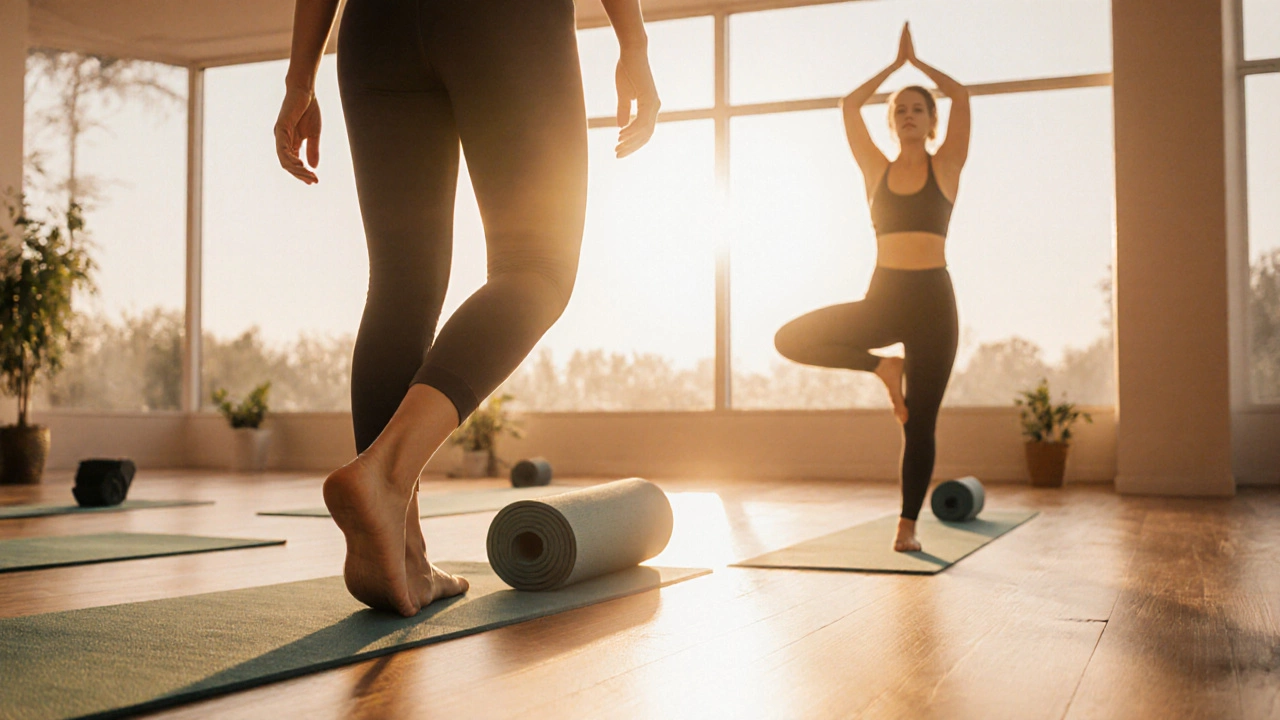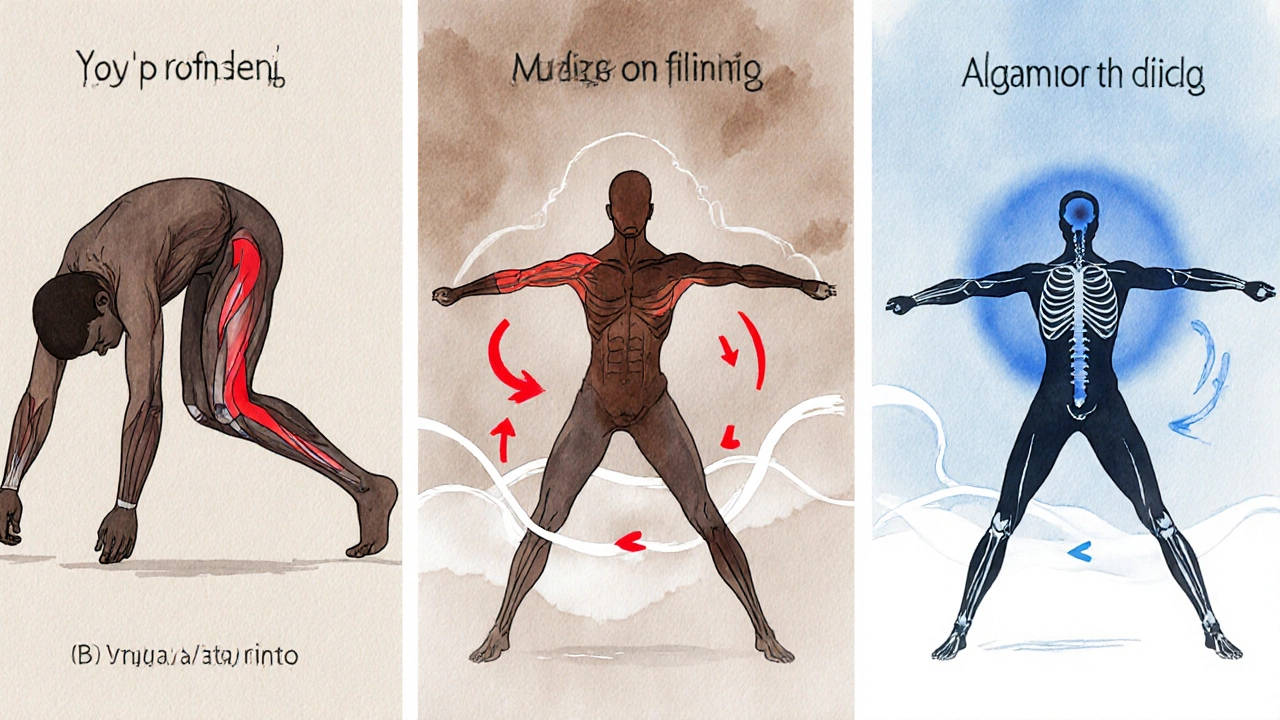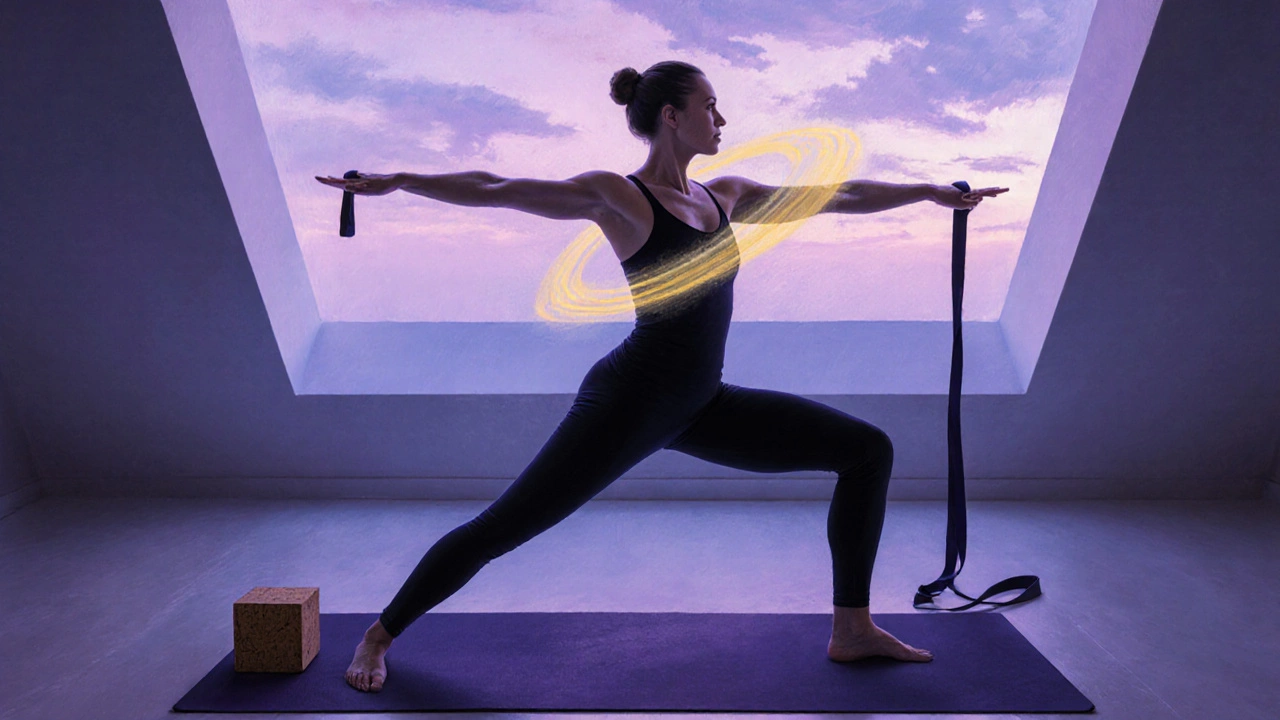
Yoga Alignment Safety Checker
How to Use This Tool
Select the poses you're practicing and check which alignment points you're maintaining. The tool will identify potential issues and provide personalized corrections.
Ever walked into a yoga class, tried a pose, and felt a sharp tug or a wobble that made you question everything? You’re not alone. Most practitioners stumble over the same pitfalls, and the good news is they’re easy to spot and correct. Below we break down the biggest yoga mistakes people make, why they happen, and quick fixes you can apply tonight.
What is Yoga?
Yoga is a mind‑body practice that blends physical postures, breath control, and meditation to improve flexibility, strength, and mental clarity. Originating in ancient India, modern yoga has many styles-from gentle Hatha to vigorous Vinyasa-but the core principles remain the same: safe alignment, mindful breathing, and progressive development.
Mistake #1: Skipping the Warm‑Up
Jumping straight into deep stretches feels satisfying, but it puts joints and muscles at risk. A proper warm‑up raises body temperature, lubricates joints, and prepares the nervous system for balance work.
Try a 5‑minute flow of Cat‑Cow, gentle Sun‑Salutations, and shoulder rolls before tackling standing poses. You’ll notice smoother transitions and fewer “stiff” moments.
Mistake #2: Ignoring Alignment
Alignment is the backbone of safe yoga. When you overlook key cues-like stacking knees over ankles in Warrior II or keeping a neutral spine in Forward Fold-small errors multiply, leading to joint strain.
Alignment refers to the precise arrangement of body parts in a pose to distribute weight evenly and protect connective tissue. Use mirrors, props, or a teacher’s hands to check that hips, shoulders, and knees stay in line.
Mistake #3: Holding Your Breath
Many beginners think the deeper the breath, the deeper the stretch. In reality, breath should flow naturally with movement. Holding air in the diaphragm creates tension that fights the very purpose of the pose.
Breath (or pranayama) is the rhythmic inhale‑exhale that fuels every asana. Count silently-inhale for three, exhale for three-to keep the breath steady, especially in balancing postures.

Mistake #4: Overstretching or Pushing Too Far
Yoga isn’t a competition. Many people chase the “splits” or a perfect backbend, ignoring the body’s signals. Overstretching tears muscle fibers and can lead to chronic tightness.
Remember the principle of “edge, not ego.” Stay at the point where you feel a mild pull, not pain. Use straps or blocks to support the pose until flexibility improves.
Flexibility measures a joint’s range of motion. Building it slowly through consistent practice beats aggressive, one‑off attempts.
Mistake #5: Neglecting Core Engagement
Even in seated forward folds, a weak core can cause the lower back to round, inviting strain. The core acts like a corset, stabilizing the spine during movement.
Imagine gently pulling your belly button toward your spine, especially in poses like Boat (Navasana) or Plank. This micro‑engagement protects the lumbar area and improves balance.
Core Strength is the ability of the abdominal and back muscles to support the torso during dynamic and static holds. Integrate short core circuits-30‑second holds of Bridge, Side Plank, and Bird‑Dog-into your routine.
Mistake #6: Rushing Through the Flow & Skipping Mindfulness
Yoga is as much mental as physical. Speeding through a Vinyasa to “finish” the class leaves little room for internal awareness, turning a meditative practice into a cardio blast.
Pause at transition points, feel the ground beneath your feet, and notice the sensations in each muscle. This mindfulness deepens the benefits and reduces the chance of misalignment.
Mindfulness in yoga means keeping attention on the present moment-breath, posture, and thoughts-without judgment. Even a 30‑second “mindful pause” before each pose transforms the experience.
Mistake #7: Using Incorrect Props or No Props at All
Props aren’t cheat codes; they’re tools to make poses accessible and safe. Skipping a block under a tight hamstring or a strap for a deep bind forces the body into compensations.
Choose the right prop size, place it firmly, and test stability before trusting it in a pose. A wobbling block defeats the purpose of alignment.
Props (blocks, straps, blankets, bolsters) are accessories that modify the difficulty or comfort level of an asana. Invest in a cork block and a fabric strap-they’re versatile and long‑lasting.

Quick Comparison: Mistake vs. Fix
| Mistake | Why It Happens | Simple Fix |
|---|---|---|
| Skipping warm‑up | Wanting to “get to the good stuff” quickly | Start every session with 5‑minute gentle flow |
| Poor alignment | Relying on memory alone | Use mirrors, props, or teacher cues |
| Holding breath | Thinking longer breath equals deeper stretch | Synchronize inhalations/exhalations with movement |
| Overstretching | Chasing Instagram‑worthy poses | Stay at a gentle pull, use blocks/straps |
| Neglecting core | Focusing only on limb placement | Engage belly button toward spine in each pose |
| Rushing flow | Treating yoga like a workout | Insert 2‑breath pauses between transitions |
| Incorrect or no props | Thinking props are “cheating” | Choose appropriate block/strap, test stability |
Checklist: Do’s and Don’ts for a Safer Practice
- Do warm up with dynamic stretches.
- Do check alignment using visual cues or a partner.
- Do breathe continuously; exhale on effort.
- Do respect your body’s edge, not ego.
- Do engage the core in every pose.
- Do pause mindfully between movements.
- Do use props to support rather than replace proper form.
- Don’t ignore pain-pain signals a structural issue.
- Don’t compare yourself to others; yoga is personal.
- Don’t rush; allow time for each transition.
How to Turn Mistakes Into Progress
- Record yourself: A quick phone video reveals hidden misalignments.
- Seek feedback: Ask an instructor to observe one pose per session.
- Set micro‑goals: Aim to improve one cue (e.g., hip stack) before moving on.
- Integrate prop drills: Use a block for half‑pigeon, then remove it when ready.
- Maintain a journal: Note breath patterns, aches, and successful adjustments.
Frequently Asked Questions
Can I practice yoga every day without injuring myself?
Yes, as long as you vary intensity, include rest days for the joints, and avoid pushing past your comfort zone. Gentle flows or restorative sessions work well on consecutive days.
Do I need fancy equipment to fix my mistakes?
Not at all. A basic cork block, a fabric strap, and a blanket are enough. Most studios provide these, and they’re inexpensive to buy for home practice.
How much time should I spend on warm‑up?
Five to ten minutes of gentle movements-cat‑cow, shoulder rolls, and a few Sun‑Salutations-gets the blood flowing and prepares the spine for deeper work.
What’s the best way to improve my core for yoga?
Incorporate short core‑focused sequences (Boat, Plank variations, and Bird‑Dog) 2‑3 times a week. Keep the engagement light-pull the navel toward the spine without sucking in the chest.
Why does my lower back hurt during forward folds?
Common causes are rounded spine, disengaged core, or forcing the stretch. Bend the knees slightly, engage the core, and hinge at the hips-not the waist.
By spotting these frequent pitfalls and applying the simple fixes above, you’ll turn frustration into steady progress. Yoga is a lifelong journey; the smarter you practice today, the smoother the path ahead.
